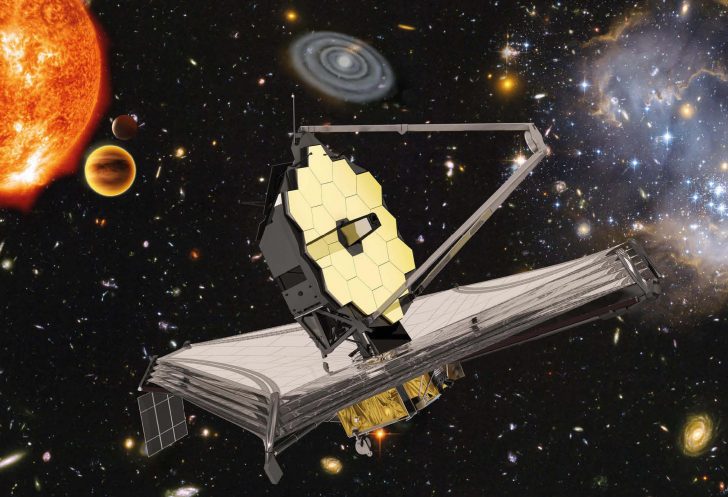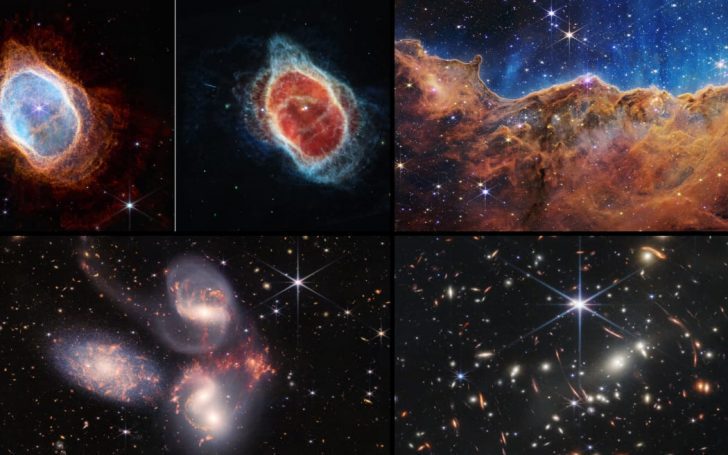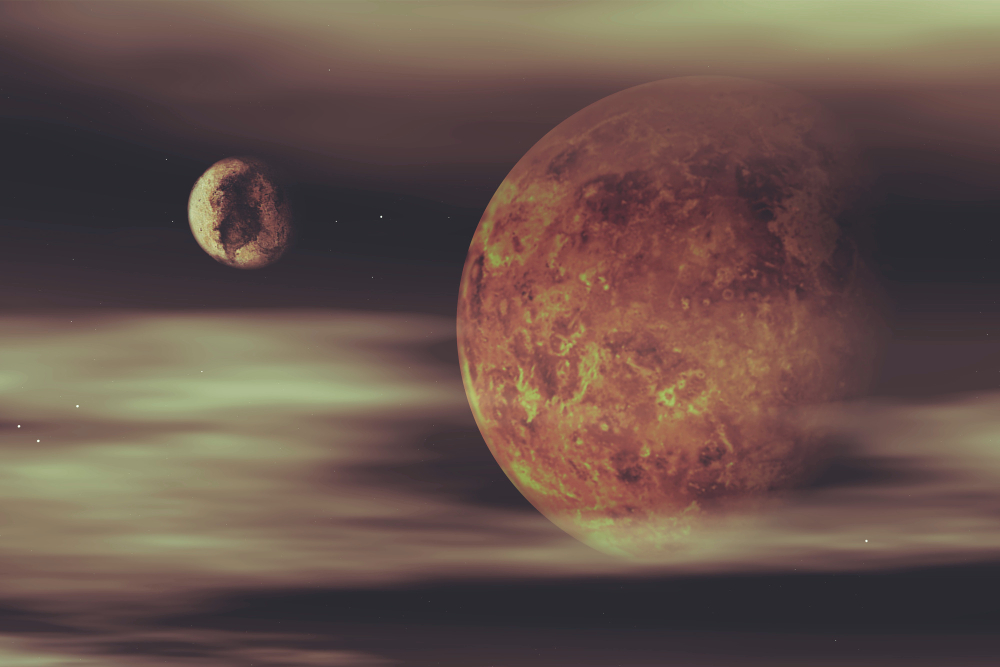Mercury retrograde is often greeted with a mix of curiosity and caution. Known for its apparent backward motion in the sky, this astrological event can significantly impact our daily lives, particularly in areas ruled by Mercury, such as communication, travel, and technology. This phenomenon occurs three to four times a year, each lasting about three weeks, during which it’s advisable to tread carefully with new ventures and communication. So, what happens when mercury is in retrograde? This comprehensive guide will explore everything you need to know about Mercury Retrograde. What Happens When Mercury Is in Retrograde? What happens when Mercury is in retrograde might feel like the universe is pressing a pause button on your plans....
Cosmic rays, mysterious particles from the cosmos, have captivated scientists and astronomers alike with their enigmatic origins and profound implications for understanding the universe. These particles, traveling at nearly the speed of light, bring tales from the far reaches of space right to our doorstep. What Are Cosmic Rays? Cosmic rays are not rays at all but rather incredibly fast-moving particles that originate from outer space. Predominantly made up of protons, these particles are remnants of atoms stripped of their electrons, revealing their bare nuclei. Earth is bombarded daily by trillions of these particles, though most are harmlessly deflected by our planet's atmosphere and magnetic field. When cosmic rays do collide with atmospheric particles, they generate...
Have you ever looked up at the night sky and wondered Where are we in the universe? This question brings forth feelings of wonder and perhaps a touch of existential awe. This comprehensive guide will explore our place in the cosmos and why Earth stands out in the vast expanse of space. Our Solar System's Structure Situated in a sprawling universe that continues to expand, we find our home on a small, rocky planet known as Earth. Nestled within the Solar System, Earth shares this celestial neighborhood with seven other planets and three dwarf planets. These celestial bodies orbit the Sun, a relatively average-sized star, which forms the center of our Solar System. The Milky Way:...
When diving into the realm of Vedic Astrology, the significance of your Moon sign in unveiling your collective essence is profound. Overshadowed by the Sun sign, your Moon sign commands the spotlight, governing your minds and encapsulating your emotional and subconscious realms. This private side, reflective of your secrets, emotional responses, and intrinsic reactions to life's multifaceted situations, offers a deeper insight into who you truly are, individually and together. Let's embark on a journey through the zodiac, exploring how each Moon sign reflects on your true selves, guiding behaviors, emotions, and life choices. Aries Moon Sign If your Moon is in Aries, you're brimming with passion, embodying a self-driven and focused demeanor. You thrive on...
In the quest for understanding the cosmic compatibility with our partners, the term Moon conjunct Venus synastry is a celestial beacon of hope, suggesting a profound connection that could be the deciding factor in meeting your soulmate. But what does this aspect entail, and how does it influence your relationship's potential longevity and depth? Let's dive into the stars to uncover the magic behind this astrological alignment. The Foundation of Synastry Before we explore the luminous path of Moon conjunct Venus synastry, let's lay down the basics. Astrology offers us a unique lens through which we can view our relationships' dynamics by comparing birth charts, a technique known as synastry. This method goes beyond the superficial...
Astrology provides a unique perspective on our personality and destiny, with Saturn playing a key role. This celestial body, known for its rings, is often overshadowed by more luminous planets but significantly influences our life's trajectory. Saturn symbolizes discipline, limitations, and responsibilities, guiding us through maturity. Understanding its place in our birth chart reveals crucial life lessons. Embracing Saturn in Aries can lead to profound personal growth and transformation. Understanding Saturn in Your Birth Chart Saturn acts as a stern teacher, emphasizing structure and order in our lives. It represents authority figures, from parents and teachers early in life to bosses and mentors as we age. Saturn's sign and house in your birth chart highlight areas...
NASA’s James Webb Has Pulled Back The Curtain To Understanding The Universe’s Earliest Galaxies Better
Just a few days into its scientific operations, NASA’s James Webb Space Observatory has already piqued scientists’ interest. They did that in a region of early galaxies. Those that had been beyond the reach of any other telescope.

Galaxies / NASA’s new discovery leads us to a novel perspective of the cosmos, argue scientists.
The things we perceive are entirely novel. “Webb is telling us that there’s a rich cosmos beyond what we thought,” said Tommaso Treu, principal investigator on one of the Webb initiatives from the University of California, Los Angeles. Yet again, the cosmos has taken us by surprise. In many respects, these early galaxies are exceptional.
What Is Taking Place?
There are now two studies in the Astrophysical Journal Letters, led by researchers Marco Castellano of the National Institute for Astrophysics in Rome, Italy. And Rohan Naidu of the Harvard-Smithsonian Center for Astrophysics and the Massachusetts Institute of Technology in Cambridge, Massachusetts.

Reuters / NASA discovers two “novel” galaxies that existed after 400 million years of the Bing Bang.
These first results come from two Early Release Science (ERS) programs on board the Webb spacecraft: the Grism Lens-Amplified Survey from Space (GLASS) and the Cosmic Evolution Early Release Science Survey (CEERS).
However, scientists analyzed the GLASS-JWST data over four days and discovered two brilliant galaxies. Though future spectroscopic studies with Webb will help confirm, these galaxies likely existed about 450 and 350 million years after the big bang (with a redshift of around 10.5 and 12.5, respectively).
What Has It Previously Been?
Additionally, a more distant GLASS galaxy, designated GLASS-z12, whose age is estimated to be 350 million years after the big bang, was discovered using Webb. “With Webb, we were shocked to see the most distant starlight anybody had ever seen,” stated Naidu.

Suzy / Pexels / This discovery paves a new arena of astrology, argue scientists.
Astronomy has now entered a brand-new era and with cutting edge scientific equipment, it’s like discovering an unknown city or artifact during an archaeological investigation. Scientists believe these technological advancements will facilitate the discovery of even more early galaxies by Webb in future deep sky surveys.
Moreover, these galaxies began to clump together. “Also, no one predicted that the Middle Ages would finish so quickly,” said Garth Illingworth of the University of California, Santa Cruz. Additionally, he has worked on the Naidu/Oesch project. The age of the cosmos back then would have been just a tenth of what it is now. In the grand scheme of the 13.8 billion-year-old expanding universe, it’s a blink of an eye.
What Followed After?
Illingworth noted the brightness of the two galaxies discovered by these groups. There are no ultra-bright, ancient stars in our immediate vicinity. Moreover, to be sure, the most distant source is relatively compact. Its colors suggest that its stellar population is mainly free of heavy elements. It maybe even contains some Population III stars. Adriano Fontana, a member of the GLASS-JWST team and the second author of the Castellano et al. research, emphasized that only Webb spectra would provide definitive evidence.
Similarly, infrared color measurements determine the Webb distance to these two galaxies. No other observatory compares to the James Webb Space Telescope regarding space research. Webb will investigate the origins and structure of the cosmos and the existence of additional planets outside our solar system.













